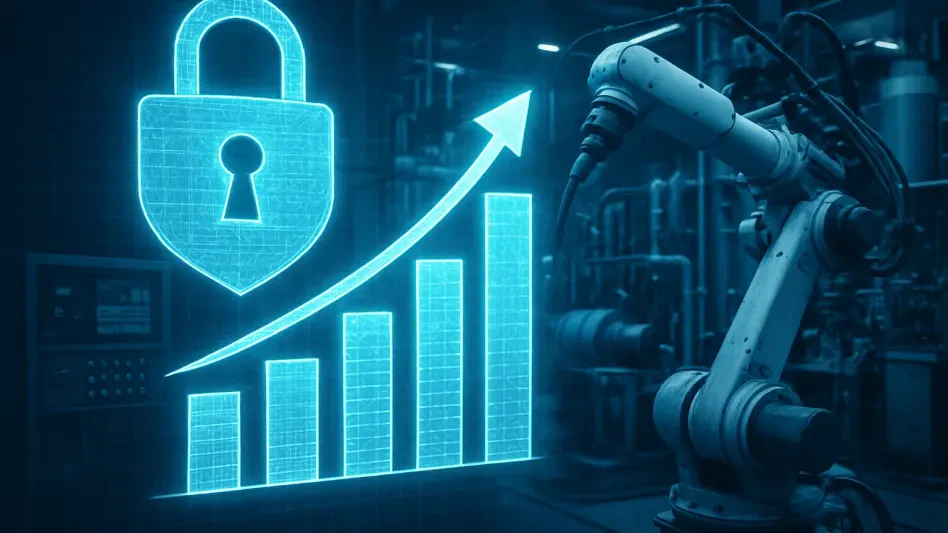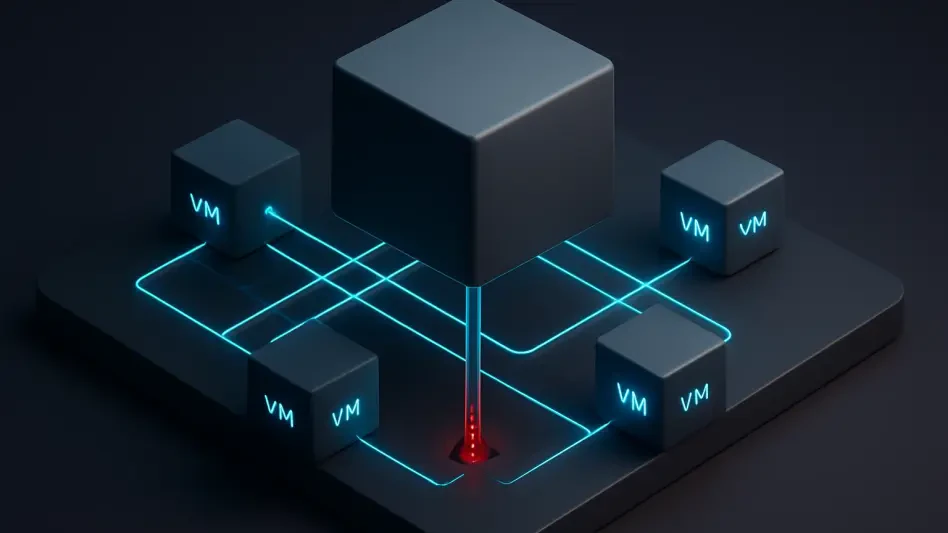Imagine a sprawling industrial facility where automated systems hum seamlessly, driving efficiency and innovation, only to be halted by a single cyber breach that cripples operations and costs millions in downtime. This scenario is no longer a distant threat but a pressing reality for industries worldwide. In 2025, as digital transformation accelerates across manufacturing, energy, and utilities, Operational Technology (OT) cybersecurity emerges as a critical market force, shifting from a defensive necessity to a strategic driver of growth. This market analysis delves into the evolving landscape of OT cybersecurity, exploring how it shapes industrial resilience, enables innovation, and positions organizations for competitive advantage in an increasingly connected world. The purpose is to uncover key trends, data-driven insights, and future projections that can guide strategic decision-making in this dynamic sector.
Market Dynamics: The Strategic Shift in OT Cybersecurity
The OT cybersecurity market is undergoing a profound transformation, driven by the convergence of IT and OT systems and the escalating sophistication of cyber threats. Industry data indicates that cyber incidents targeting industrial control systems have surged by over 30% in the past two years, with potential losses in downtime and recovery often reaching into the millions per event. This alarming trend underscores the urgency for robust security frameworks, not just as protective measures but as enablers of operational continuity. Unlike traditional views of cybersecurity as a cost center, current market sentiment reveals a growing recognition of its role in supporting business agility and market competitiveness across diverse sectors.
A pivotal dynamic shaping this market is the integration of cybersecurity into core industrial strategies. Organizations are increasingly prioritizing investments that yield dual benefits—safeguarding critical infrastructure while enhancing efficiency through better asset visibility and predictive maintenance capabilities. For instance, sectors like energy and manufacturing are leveraging secure OT environments to reduce incident recovery times significantly, transforming potential weeks of disruption into mere days. This shift reflects a broader market trend where financial leaders are beginning to see tangible returns on security investments, redefining the value proposition of OT cybersecurity.
Regulatory pressures also play a substantial role in driving market growth. Frameworks such as NERC CIP in North America and NIS2 in Europe are pushing companies to adopt stringent security measures, with non-compliance risks including hefty fines and reputational damage. As industries navigate these mandates, the demand for scalable, compliance-ready cybersecurity solutions is projected to grow at a compound annual rate of approximately 12% from 2025 to 2027. This regulatory landscape, combined with the need for operational uptime, positions OT cybersecurity as a cornerstone of industrial planning, influencing market strategies across global regions.
Current Trends: Redefining Industrial Security as a Business Asset
One prominent trend in the OT cybersecurity market is the repositioning of security as a business enabler rather than a barrier. Industrial leaders are increasingly focusing on adaptive resilience, ensuring that operations remain unaffected even during cyber incidents. Market analysis suggests that companies adopting such proactive strategies can achieve up to a 40% reduction in operational disruptions, translating into significant cost savings and improved stakeholder confidence. This approach is particularly evident in sectors like healthcare, where secure OT systems protect patient safety while supporting digital innovations.
Another key trend is the emphasis on aligning cybersecurity with overarching business objectives. The historical disconnect between OT priorities, such as system availability, and business goals like rapid digital transformation has created friction in many organizations. However, a growing number of firms are establishing cross-functional governance structures to bridge this gap, using shared metrics to balance security needs with innovation demands. This alignment is critical in fast-paced markets where delays in adopting new technologies can erode competitive edges, especially in manufacturing and utilities.
The integration of cybersecurity into industrial design is also gaining traction as a cost-effective strategy. In new facility developments, often referred to as greenfield projects, embedding security from the planning stage is proving to lower vulnerabilities and prevent system obsolescence. Market insights reveal that early integration can reduce long-term security costs by nearly 25% compared to retrofitting existing systems. This trend is particularly strong in regions with stringent compliance requirements, where designing secure systems upfront ensures adherence to evolving regulations without disrupting operations.
Future Projections: Innovation and Growth on the Horizon
Looking ahead, the OT cybersecurity market is poised for significant expansion, fueled by technological advancements and deeper connectivity across industrial ecosystems. The adoption of AI at the edge, reliant on secure OT environments for high-quality data processing, is expected to drive efficiency gains and innovation in sectors like energy and logistics. Projections suggest that by 2027, over 60% of industrial organizations will integrate AI-driven solutions, with cybersecurity serving as the foundational enabler, protecting data integrity and operational workflows.
Emerging technologies such as digital twins and Cyber-Physical Systems are also set to redefine the market landscape. These platforms allow for safe scenario testing within complex models, supported by robust security measures that maintain physical fail-safes. Market forecasts indicate that investment in these innovations will rise sharply, with cybersecurity budgets expected to increase by 15% annually through 2027 to support such transformative initiatives. This growth signals a future where security not only mitigates risks but amplifies the potential of cutting-edge industrial applications.
Regulatory and economic factors will further shape market trajectories. Stricter mandates are anticipated to emerge, particularly in Europe and North America, necessitating advanced security solutions that can adapt to changing compliance landscapes. Simultaneously, economic pressures may accelerate the adoption of scalable, cost-efficient cybersecurity tools, especially among small to medium-sized enterprises entering the industrial space. Organizations with strong OT security frameworks are likely to gain a competitive advantage, confidently pursuing digital transformation without the looming threat of ransomware or data breaches.
Strategic Implications: Navigating the Evolving OT Security Landscape
Reflecting on this market analysis, it becomes evident that OT cybersecurity has transitioned from a reactive safeguard to a proactive driver of industrial growth. The examination of current trends and future projections highlights how security investments deliver measurable value, from reducing downtime to enabling innovations like AI at the edge. The market dynamics underscore a clear shift in perception, with industries across the board recognizing cybersecurity as integral to operational resilience and competitive positioning.
Industrial leaders are encouraged to capitalize on these insights by prioritizing cross-functional collaboration, ensuring that security strategies align seamlessly with business goals through shared metrics and governance models. Embedding cybersecurity into the design phase of new projects emerges as a cost-effective approach that has proven successful in minimizing vulnerabilities. Furthermore, investing in scalable solutions to meet evolving regulatory demands positions organizations to stay ahead of compliance challenges while maintaining flexibility.
As a forward-looking step, companies need to focus on building trust architectures to support safe data sharing across supply chains and ecosystems, a critical factor as connectivity deepens. Regular training and simulation exercises have also shown promise in preparing teams for emerging threats, fostering a culture of proactive security. By viewing OT cybersecurity through the lens of value creation—enhancing uptime, driving efficiency, and unlocking innovation—industrial players can secure stakeholder buy-in and build a sustainable foundation for long-term success in a hyper-connected landscape.








